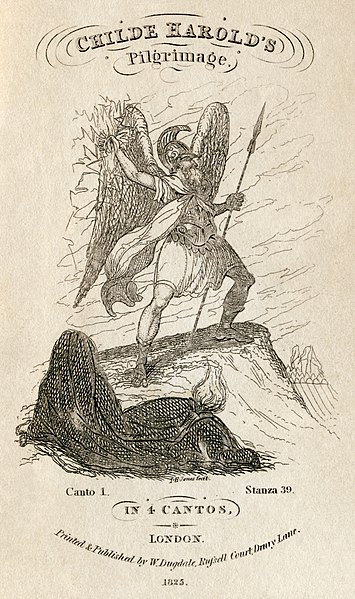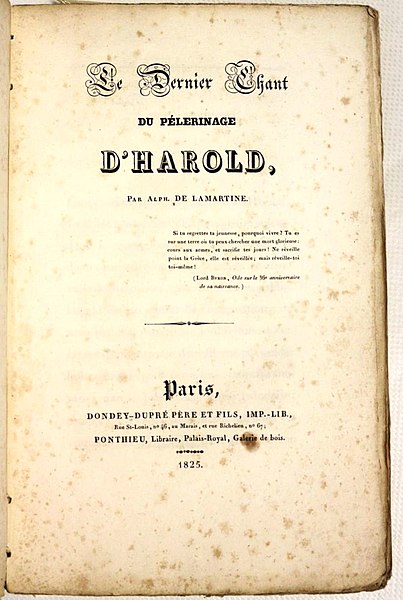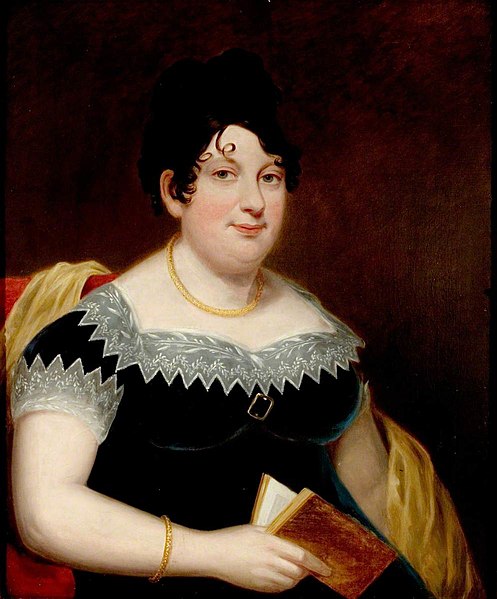Childe Harold's Pilgrimage
Childe Harold's Pilgrimage is a long narrative poem in four parts written by Lord Byron. The poem was published between 1812 and 1818. Dedicated to "Ianthe", it describes the travels and reflections of a young man disillusioned with a life of pleasure and revelry and looking for distraction in foreign lands. In a wider sense, it is an expression of the melancholy and disillusionment felt by a generation weary of the wars of the post-Revolutionary and Napoleonic eras. The title comes from the term childe, a medieval title for a young man who was a candidate for knighthood.
Lady Charlotte Harley, the dedicatee of Childe Harold under the name Ianthe
Frontispiece to a c. 1825 edition of Childe Harold's Pilgrimage
Title page of Alphonse de Lamartine's Le dernier chant du pèlerinage d'Harold, 1825
Eugene Onegin as Byronic hero, Dmitry Kardovsky's 1909 illustration
George Gordon Byron, 6th Baron Byron, was a British poet and peer. He is one of the major figures of the Romantic movement, and is regarded as being among the greatest of English poets. Among his best-known works are the lengthy narratives Don Juan and Childe Harold's Pilgrimage; much of his shorter lyrics in Hebrew Melodies also became popular.
Portrait by Thomas Phillips, c. 1813
An engraving of Byron's father, Captain John "Mad Jack" Byron, date unknown
Catherine Gordon, Byron's mother, by Thomas Stewardson
John FitzGibbon, 2nd Earl of Clare








